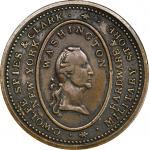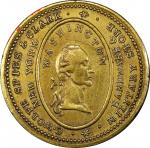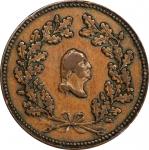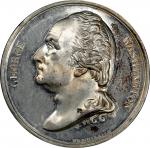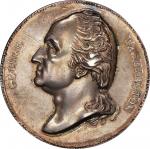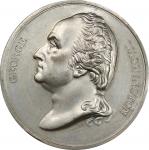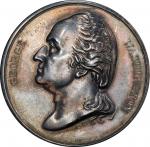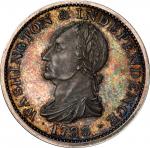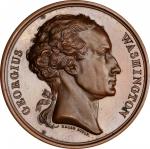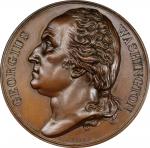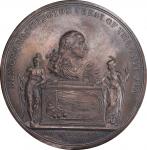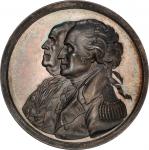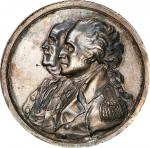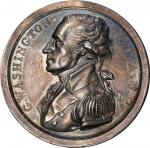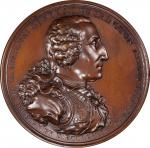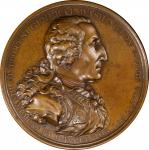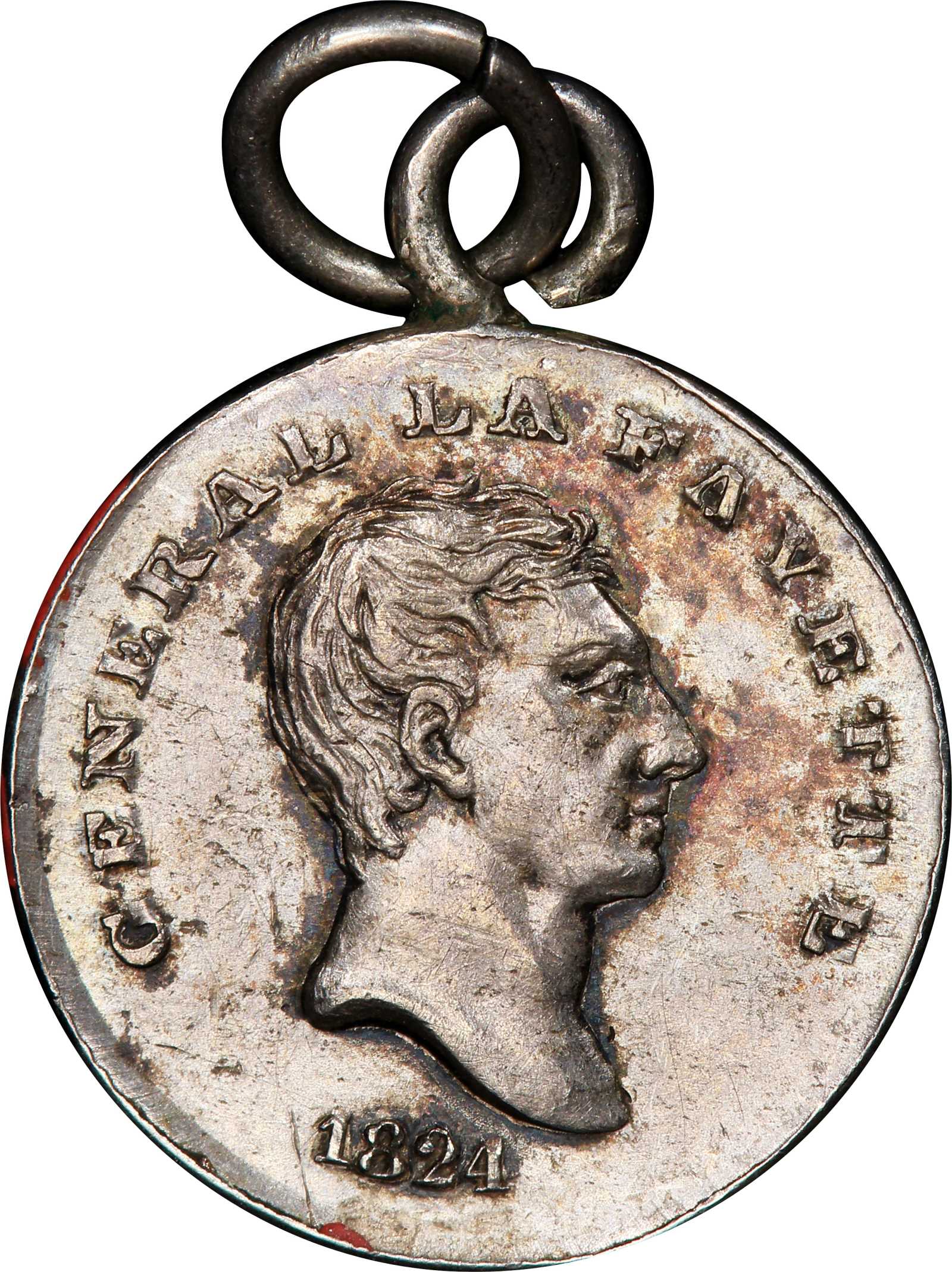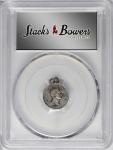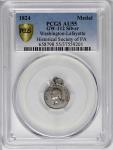1824 Lafayette Visit medalet by Joseph Lewis. Musante GW-112, Baker-198A. Silver. AU-55 (PCGS).14.4 mm (without loop). 30.3 grains. An immensely historic medalet that is as popular as it is rare. The surfaces are light gray silver with just a trace of deeper mottled toning on both sides. The Lafayette side is slightly more toned, with an accent of golden brown in the field. The integral loop is attached at only one side, which speaks to the rarity of finding an example with it still intact. An original jump ring is even rarer. The strike is slightly uneven as often seen, the Washington side being better centered and more even than the other. High grade for this medalet, with a trace of luster remaining. While this is too thin for a Baker attribution on the edge, a dab of red is seen, anyway.<p>These have traditionally been attributed to the hand of Charles Cushing Wright. In 2008, John M. Kleeberg published a paper in the <em>American Journal of Numismatics, Second Series</em>, titled “Washington Counterstamps — The Lafayette Connection.” Therein, he laid out convincing evidence that the maker of these medalets was not Wright, but rather New York engraver, Joseph Lewis. Though he pointed out that there were three engravers advertising medalets at the time - Lewis, Robert Lovett, Sr., and James D. Stout - the best evidence for Lewis seems to be that he published more advertisements, suggesting that this bore financial fruit and that his work was the best seller. Kleeberg outlined further evidence and noted that Lewis had sold 2,000 medalets in New York by late September of 1824. Wright is not mentioned as a maker of anything beyond some Lafayette buttons for the Scoville firm, which were signed by him. The paper is an interesting read and has led most people to accept that Lewis was the engraver.<p>It is worth noting that for a beloved charm reportedly represented by 2,000 sales in New York alone, and more in Philadelphia, this medalet is remarkably rare today. Perhaps most were simply lost, considering the rarity of the intact loop.<p>One thing not addressed by Kleeberg is that early catalog descriptions referred to these medalets as the work of Wright. Despite the lack of advertising evidence, W. Elliot Woodward, writing in the May 1864 John McCoy catalog, identified “Wright” as the maker, within a decade of the engraver’s passing. This means that Woodward and Wright lived at the same time and it is not a stretch to imagine that Woodward might have had first or second-hand direct knowledge of pertinent facts. It is also possible that Wright’s signature on the Scoville buttons simply led people to believe that he was the maker of other medallic objects as well.<p>There is more to be deciphered in this story, to be sure. This medalet is not the only one known fitting this general description. In fact, there are two more. One is that described by Musante as a later crude copy (GW-113), and given a suggested date of circa 1876. This assignment of later vintage does not seem certain, however, and the medalet seems even rarer than the one offered here. A third is a piece in the Q. David Bowers Collection, and at the time of this writing we believe it to be unpublished. In the writer’s opinion, this one is contemporary to Lafayette’s visit, and may be unique. If so, it is the rarest of the three. The matter of Wright aside, it is noteworthy that we are aware of three different medalets fitting roughly the same description, while Kleeberg noted three different engravers advertising them in 1824.Ex William Spohn Baker Collection, to the Historical Society of Pennsylvania by bequest, November 15, 1897. Further provenance is unknown, but the examples sold in both the Bushnell and Crosby (1883) sales were described with a ring attached, which is rare. The Bushnell specimen sold to Chapman, and the Crosby catalogs we have seen are unnamed, but either one is a potential candidate as a previous owner of this example.




